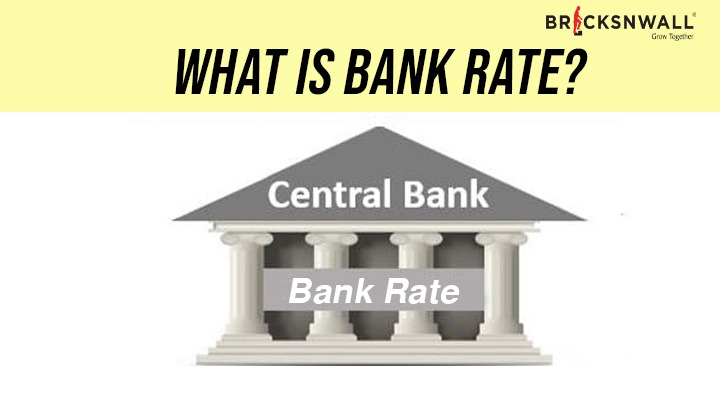What is Bank Rate?
Bricksnwall Trusted Experts

The bank
rate is the rate of interest at which central banks lend money to commercial
banks. It is also known as the discount rate or base rate. The bank rate plays
a crucial role in the economy as it affects the interest rates that commercial
banks charge their customers.
In
this blog, we will discuss the bank rate, its significance, and its impact on
the economy.
Central
banks use the bank rate as a tool to control the money supply in the economy.
By increasing or decreasing the bank rate, central banks can influence the
amount of money that commercial banks can lend to their customers. For example,
if the central bank increases the bank rate, it
becomes more expensive for commercial banks to borrow money from the central
bank. As a result, commercial banks are likely to increase their lending rates
to their customers, making it more expensive for businesses and consumers to
borrow money. This, in turn, can lead to a decrease in demand for goods and
services and a slowdown in economic growth.
On the other
hand, if the central bank decreases the bank rate, it becomes cheaper for
commercial banks to borrow money from the central bank. As a result, commercial
banks are likely to decrease their lending rates to their customers, making it
more affordable for businesses and consumers to borrow money. This, in turn,
can lead to an increase in demand for goods and services and an acceleration in
economic growth.
The bank
rate also plays a critical role in controlling inflation. When inflation is too
high, it can lead to a decrease in the purchasing power of money, which can be
damaging to the economy. Therefore, central banks use the bank rate as a tool
to control inflation. When inflation is too high, central banks increase the
bank rate to make borrowing more expensive, which can reduce demand for goods
and services and help to lower prices. Conversely, when inflation is too low,
central banks decrease the bank rate to make borrowing cheaper, which can
stimulate demand for goods and services and help to raise prices.
The bank rate
can also have an impact on exchange rates. When the bank rate is high, it can
make the currency of that country more attractive to foreign investors, as they
can earn a higher rate of return on their investments. This can lead to an
increase in the demand for that currency, which can drive up its value relative
to other currencies. Conversely, when the bank rate is low, it can make the
currency of that country less attractive to foreign investors, as they can earn
a lower rate of return on their investments. This can lead to a decrease in the
demand for that currency, which can drive down its value relative to other
currencies.
Conclusion
In conclusion, the bank rate is a critical tool used by central banks to control the money supply in the economy, control inflation, and influence exchange rates. By increasing or decreasing the bank rate, central banks can influence the interest rates that commercial banks charge their customers, which can have a significant impact on economic growth and stability. Therefore, it is essential for policymakers, investors, and consumers to pay close attention to changes in the bank rate and understand its potential impact on the economy.




